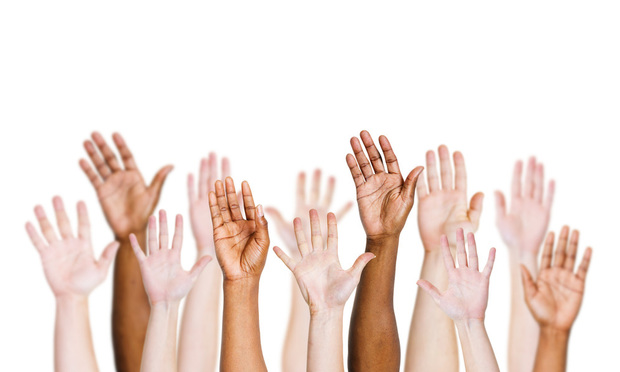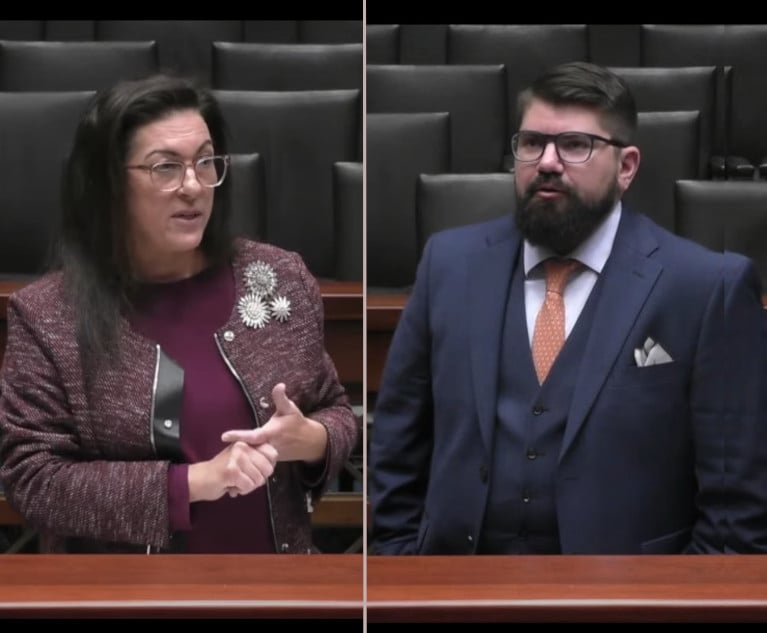One Texas Law School Is Doing the Heavy Lifting When It Comes to Diversity Efforts
Texas legal educators are striving to recruit racially and ethnically diverse law students, but there's one law school that's excelling hand-over-fist compared to the others.
March 01, 2018 at 09:00 AM
7 minute read

Texas legal educators are striving to recruit racially and ethnically diverse law students, but there's one law school that's excelling hand-over-fist compared to the others.
With 91 percent of its current students hailing from minority racial and ethnic backgrounds, Texas Southern University Thurgood Marshall School of Law takes the top spot when it comes to a diverse student body.
Texas Lawyer analyzed demographic data from the 10 Texas law schools and ranked them based on the percentage of minority students. Schools submit data annually to the American Bar Association Section of Legal Education and Admissions to the Bar, which is responsible for accrediting law schools.
Among 6,332 current Texas law students, 54 percent are white, 23 percent are Hispanic, 11 percent are black, 5 percent are Asian and the remaining are other races or multiracial. There's slightly less diversity among the 1,957 law graduates of 2017: 61 percent are white, 18 percent are Hispanic, 8 percent are black, 6 percent are Asian, 3 percent are multiracial and the rest are other races.
While Thurgood Marshall School of Law is far and away the leader in diversity, the state's other law schools are committed to increasing student diversity, said Kent Lollis, executive director for diversity initiatives at the Law School Admission Council. Lollis knows all of the Texas law deans and said he applauds their efforts.
“They are extremely interested in a diverse profession, and they know it's the lifeblood of the future of the legal profession,” he said. “Diversity brings different perspectives and it's absolutely essential to becoming a good lawyer. Your clients will come from all kinds of backgrounds.”
While the law student population still lags behind an equitable reflection of the Texas general population, it bests the current racial make-up of lawyers practicing in Texas. Among the U.S. Census Bureau's 2016 estimate of 27.9 million people in Texas, 42.6 percent were white, 39.1 percent were Hispanic, 12.6 percent were black, 4.8 percent were Asian, and the remainder were other races or multiracial. Meanwhile, there are nearly 90,500 active in-state attorneys in Texas. Just over 86,000 of them reported their race and ethnicity to the State Bar of Texas for a 2017 demographic report. Among the lawyers who reported their demographics, 79 percent were white, 10 percent were Hispanic, 5 percent were black, 3 percent were Asian and the remainder were multiracial or other races.
There's no hard numbers that schools must achieve to be considered diverse, Lollis noted. Many law schools look to diversity percentages in their feeder schools or geographical locations and use them as benchmarks. But he cautioned that schools must avoid setting absolute percentages as a goal, as that could be construed as a quota, which courts have strictly forbidden.
The best thing a law school can do is try to have a critical mass of minority students “so the students they admit don't feel isolated by their race, gender or sexual orientation,” Lollis explained.
Diversity Rankings
It's no surprise that Texas Southern leads in diversity, as the historically black university has made diversity a prime objective. The school has even won national accolades from The National Jurist, a legal education magazine, for being the most diverse law school in the whole country.
Among 612 current students at Texas Southern, 59 percent are black—the highest percentage in Texas—28 percent are Hispanic and 9 percent are white. The diversity of 2017 graduates was slightly less, yet still the best in Texas. Among 124 graduates, 40 percent were black, 33 percent were Hispanic, 19 percent were white and the rest were other races.
Gary Bledsoe, acting dean of Thurgood Marshall, didn't return a call seeking comment.
Based on their percentage of minority students, Texas law schools rank as: No. 2, St. Mary's University School of Law in San Antonio; No. 3, the University of North Texas Dallas College of Law; No. 4, South Texas College of Law Houston; No. 5, the University of Houston Law Center; No. 6, the University of Texas School of Law; No. 7, Texas Tech University School of Law; No. 8, Baylor University School of Law; and No. 9, Texas A&M University School of Law.
Texas Tech and Baylor both have 27 percent minority students and would have tied at No. 7, but Texas Lawyer broke the tie by giving an edge to Texas Tech, as it has a larger percentage of minorities among 2017 graduates.
The school ranked the lowest is Southern Methodist University Dedman School of Law in Dallas at No. 10. Among its 744 students, 68 percent were white, 12 percent were Hispanic, 5 percent were Asian, 4 percent were black and the remaining were other races or multiracial.
Southern Methodist is trying hard to increase diversity, said Dean Jennifer Collins.
“A commitment to diversity and inclusion have been one of my core commitments as a leader,” Collins said. She's created a diversity and inclusion initiative and appointed a director to lead it. The school is now interviewing for an admissions position focused on recruiting diverse applicants from high-minority colleges.
Her policies since becoming dean three years ago have ushered in results. For example, ABA data shows that in 2015, 71 percent of the school's 740 students were white and 21 percent were minorities. There's been a four-point shift toward greater diversity, since the student body now is 68 percent white and 25 percent minority.
Collins said she's proud of the school's progress and will work hard to continue the momentum.
“We are nowhere close to where we want to be yet,” she said.
Boosting the Numbers
Lollis, the diversity expert at the Law School Admission Council, said he's constantly taking phone calls from law school deans seeking advice to make their schools more diverse.
There's no magic formula, but he said that schools must amp up their recruitment of minority students by creating pipeline programs, and reach out to colleges with high minority enrollment. Schools should form relationships with undergraduate pre-law advisers to identify bright students early and capture them into the law school applicant pool, Lollis said.
Statistically speaking, minority students perform worse on standardized tests, including the Law School Admission Test. When schools focus just on an applicant's test scores—often because they're worried about their ranking by U.S. News and World Report, which heavily weighs LSAT scores—it can harm minority recruitment.
Lollis said although the first goal is always to find students who will succeed. After that, a school should take into account nontraditional qualifications like the obstacles applicants have overcome, their educational backgrounds and ways they've achieved success in life.
“That frequently causes them to look past just numbers alone,” he said.
Law schools with high tuition and costs face another hurdle because some minority students, who are also low-income, can't attend expensive law schools, even with student loans. Such schools must examine their financial aid policies and seek donations for scholarships.
One of the main diversity challenges facing schools is that black and Latino students aren't graduating high school, earning college degrees, nor taking the LSAT at the same rate as white students.
“It is tough, because we can't create students where the qualified pool doesn't exist,” Lollis explained. “I can't change the fact that our educational opportunities are unequal in our society, so therefore a lot of students from diverse backgrounds don't have the same opportunity.”
This content has been archived. It is available through our partners, LexisNexis® and Bloomberg Law.
To view this content, please continue to their sites.
Not a Lexis Subscriber?
Subscribe Now
Not a Bloomberg Law Subscriber?
Subscribe Now
NOT FOR REPRINT
© 2025 ALM Global, LLC, All Rights Reserved. Request academic re-use from www.copyright.com. All other uses, submit a request to [email protected]. For more information visit Asset & Logo Licensing.
You Might Like
View All
'It's Like They Lynched You:' Law Professor's Discrimination Claim Reaches High Court
7 minute read


Trending Stories
Who Got The Work
J. Brugh Lower of Gibbons has entered an appearance for industrial equipment supplier Devco Corporation in a pending trademark infringement lawsuit. The suit, accusing the defendant of selling knock-off Graco products, was filed Dec. 18 in New Jersey District Court by Rivkin Radler on behalf of Graco Inc. and Graco Minnesota. The case, assigned to U.S. District Judge Zahid N. Quraishi, is 3:24-cv-11294, Graco Inc. et al v. Devco Corporation.
Who Got The Work
Rebecca Maller-Stein and Kent A. Yalowitz of Arnold & Porter Kaye Scholer have entered their appearances for Hanaco Venture Capital and its executives, Lior Prosor and David Frankel, in a pending securities lawsuit. The action, filed on Dec. 24 in New York Southern District Court by Zell, Aron & Co. on behalf of Goldeneye Advisors, accuses the defendants of negligently and fraudulently managing the plaintiff's $1 million investment. The case, assigned to U.S. District Judge Vernon S. Broderick, is 1:24-cv-09918, Goldeneye Advisors, LLC v. Hanaco Venture Capital, Ltd. et al.
Who Got The Work
Attorneys from A&O Shearman has stepped in as defense counsel for Toronto-Dominion Bank and other defendants in a pending securities class action. The suit, filed Dec. 11 in New York Southern District Court by Bleichmar Fonti & Auld, accuses the defendants of concealing the bank's 'pervasive' deficiencies in regards to its compliance with the Bank Secrecy Act and the quality of its anti-money laundering controls. The case, assigned to U.S. District Judge Arun Subramanian, is 1:24-cv-09445, Gonzalez v. The Toronto-Dominion Bank et al.
Who Got The Work
Crown Castle International, a Pennsylvania company providing shared communications infrastructure, has turned to Luke D. Wolf of Gordon Rees Scully Mansukhani to fend off a pending breach-of-contract lawsuit. The court action, filed Nov. 25 in Michigan Eastern District Court by Hooper Hathaway PC on behalf of The Town Residences LLC, accuses Crown Castle of failing to transfer approximately $30,000 in utility payments from T-Mobile in breach of a roof-top lease and assignment agreement. The case, assigned to U.S. District Judge Susan K. Declercq, is 2:24-cv-13131, The Town Residences LLC v. T-Mobile US, Inc. et al.
Who Got The Work
Wilfred P. Coronato and Daniel M. Schwartz of McCarter & English have stepped in as defense counsel to Electrolux Home Products Inc. in a pending product liability lawsuit. The court action, filed Nov. 26 in New York Eastern District Court by Poulos Lopiccolo PC and Nagel Rice LLP on behalf of David Stern, alleges that the defendant's refrigerators’ drawers and shelving repeatedly break and fall apart within months after purchase. The case, assigned to U.S. District Judge Joan M. Azrack, is 2:24-cv-08204, Stern v. Electrolux Home Products, Inc.
Featured Firms
Law Offices of Gary Martin Hays & Associates, P.C.
(470) 294-1674
Law Offices of Mark E. Salomone
(857) 444-6468
Smith & Hassler
(713) 739-1250






